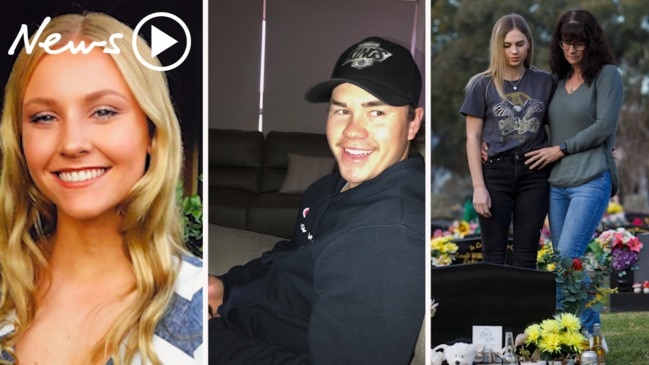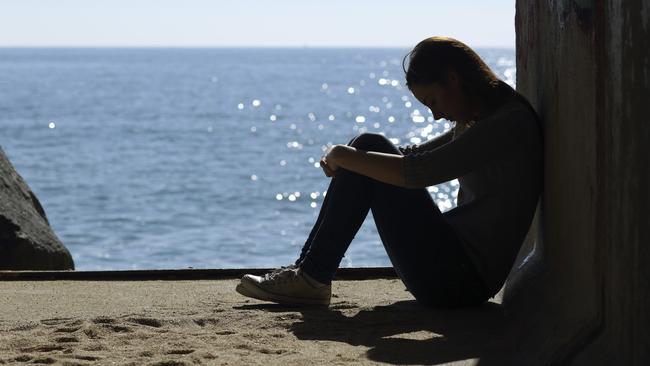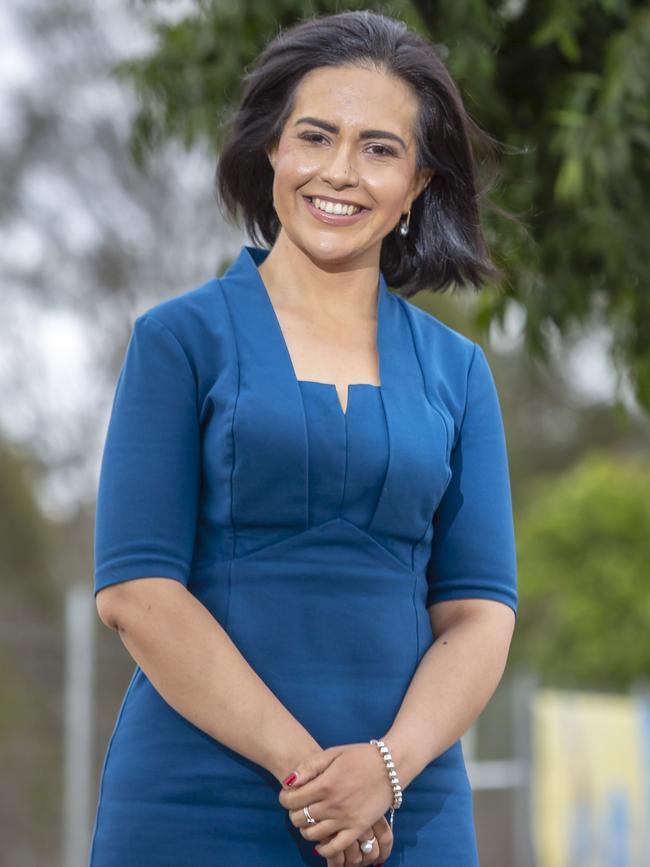Suicide rate in teenage girls rises amid surge in anxiety, depression
A new report has revealed suicide rates in teenage girls has risen the fastest of any age group, with experts saying it comes amid the rapidly increasing anxiety and depression in young women over the last decade.

NSW
Don't miss out on the headlines from NSW. Followed categories will be added to My News.
The current generation of teenage girls are the most suicidal in generations and the most willing to follow-through on their turmoil.
The myth that young girls mostly self-harm through injury while boys complete suicide, has been turned on its head by a study of suicide trends from 1964 to 2018.
An Australian Institute of Health and Welfare and Flinders University report has revealed suicide rates in recently-born females have risen the fastest of any age group during their teen years.
Those born 1994–98 and 1999–2003 reached six suicide deaths per 100,000 by age 15–19, considerably higher than earlier generations of female at the same age.

Tragically, the report also revealed young girls are turning to more effectively lethal means to kill themselves — a matter that has medical experts begging the federal government to make mental health a priority in Tuesday night’s Federal budget.
“The big change is this report is increasing suicide rates in younger women; this is consistent with many of the personal stories told in The Sunday Telegraph,” Sydney University’s Brain and Mind Centre co-director Professor Ian Hickie said.
“And this contrasts with the historical view that young women don’t really intend to kill themselves (simple distress or ‘cries for help’).
“It’s also consistent with the worldwide and Australian evidence of rapidly increasing anxiety and depression in young women over the last decade, and particularly the last five years.”
MORE FROM BEN PIKE
Residents abandon homes in ‘sinking’ street
Chronic counsellor shortage leaves school kids at risk
The report also found that in 2017, the number of fatal episodes of self-harm was 48 per cent higher than the number of fatal episodes in 1994.
The Sunday Telegraph has recently reported on a number of youth suicide clusters in Sydney’s northern suburbs as well as Griffith and Kiama.
Brain and Mind Centre modelling released earlier this year found COVID-19’s economic impact will increase the number of NSW suicides in 15-24-year-olds by 30 per cent in the next five years.
Prof Hickie is calling on the federal government to inject $3.7 billion over four years into beefing up hospital and acute mental health care.
A spokesman for Health Minister Greg Hunt said last month the estimated expenditure for mental health services and suicide prevention in 2020-21 is $5.7 billion.
An August 2019 study from the US Department of Health and Human Services revealed that depressive symptoms among girls accelerated between 2011 and 2018.
Macquarie University Psychology Professor Ron Rapee said the past decade has also seen a concerning increase in depression.
“A lot of research is talking about increased levels of loneliness being a big driver of depression in society,” Prof Rapee said.
LIFELINE: 13 11 14
Students smashed by mental health pandemic
Students already suffering pandemic-induced isolation are being let down by serious shortcomings in the number of counsellors in the state’s schools.
Regional students in boarding school ‘bubbles’ are some of the worst affected, hit with the double whammy of isolation in the city and drought when they get home.
The majority of schools in NSW do not have a single full-time counsellor allocation with Western Sydney and rural regions the hardest hit.
Hundreds of schools are receiving little more than an hour of counselling each week, according to a response to Upper House questions obtained by the NSW Labor opposition.
Not one school in Barwon or Rockdale has a full-time counsellor, while less than 25 per cent of schools in East Hills, Penrith and Camden have one full-time counsellor.
Of the 2185 schools only 1842 have a full time counsellor and hundreds of schools are receiving little more than an hour counselling each week and 341 schools have just 1.6 hours a week allocation and a further 143 schools have a counsellor for just 3.25 hours a week.

“Sometimes parents are advised to get support from private sector counselling, but this path is not affordable for all families, in which case the issues for which their child needs counselling remains unaddressed,” Federation of Parents and Citizens Associations of NSW spokesman Patrick Doumani said.
“This lack of resources may also impact teachers and other staff, who are left to deal with mental health needs of students, even if they are not prepared or qualified to do so.
“Many of these students would have already had mental health issues, and this period would have exacerbated those issues.”
The Sunday Telegraph is campaigning to increase the number of school counsellors in NSW schools to one for every 500 students.
We are also calling on the NSW Government to provide mental health first aid training to all NSW teachers.
Education Minister Sarah Mitchell said their election commitment will provide every public high school in NSW with one full-time counsellor and one full-time student support officer. “These two roles will complement the range of other student wellbeing and mental health programs schools deliver (and) this commitment remains on track,” she said.
Isolated Children’s Parents’ Association of NSW president Claire Butler said many rural and remote schools do not have access to a face-to-face counsellor.
“Compounding this is the fact that many children are away at boarding school trying to cope with the pressures of drought back home,” she said.
“Students are being disadvantaged without real access to face-to-face counselling sessions to support their academic, social and emotional welfare.”
Opposition education spokeswoman Prue Car said “this crisis is ripping through communities across NSW right now”.
“Counsellors can be the lifeline that save our kids from ending up in the emergency department – how much more will it take for Gladys Berejiklian to do something?”
